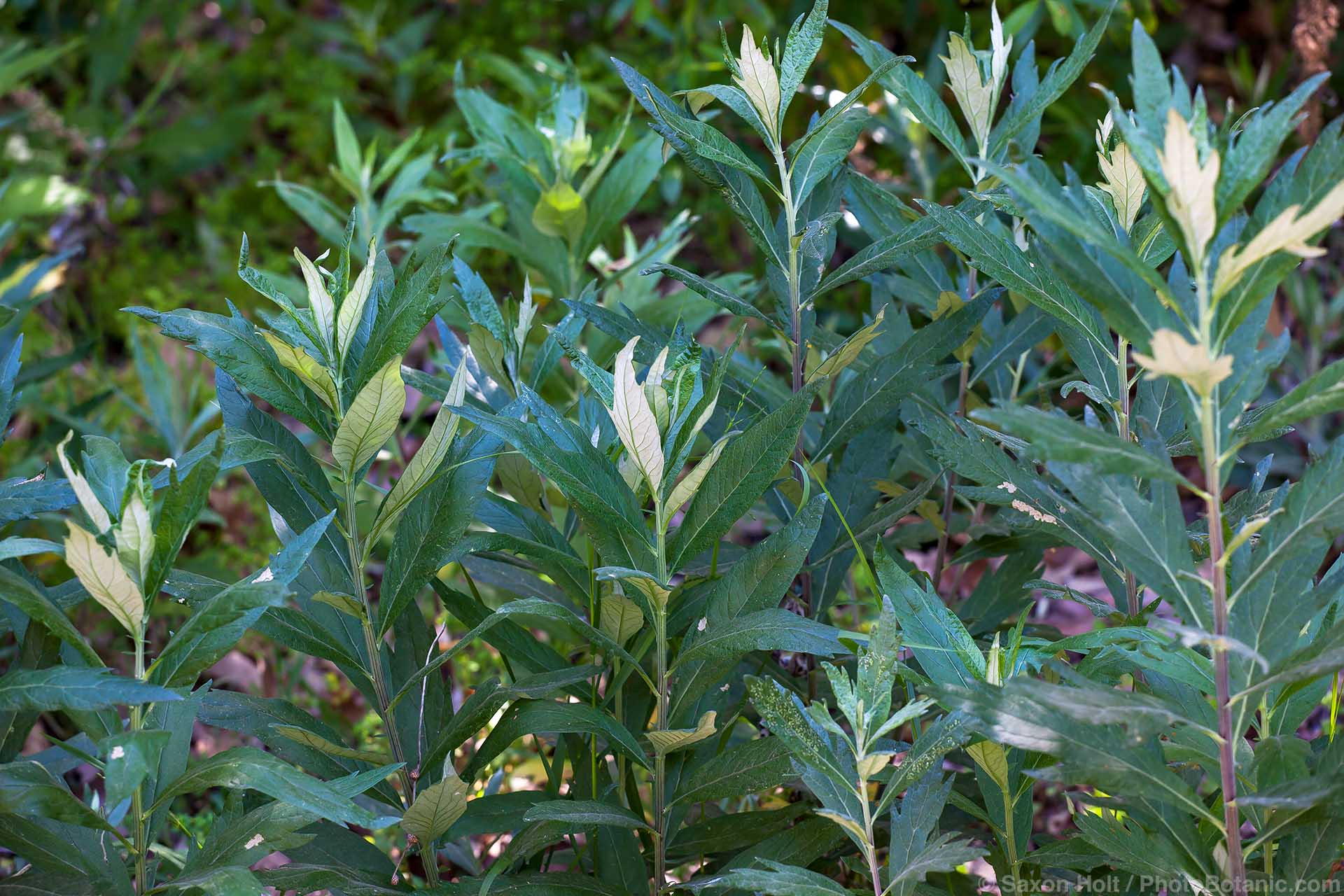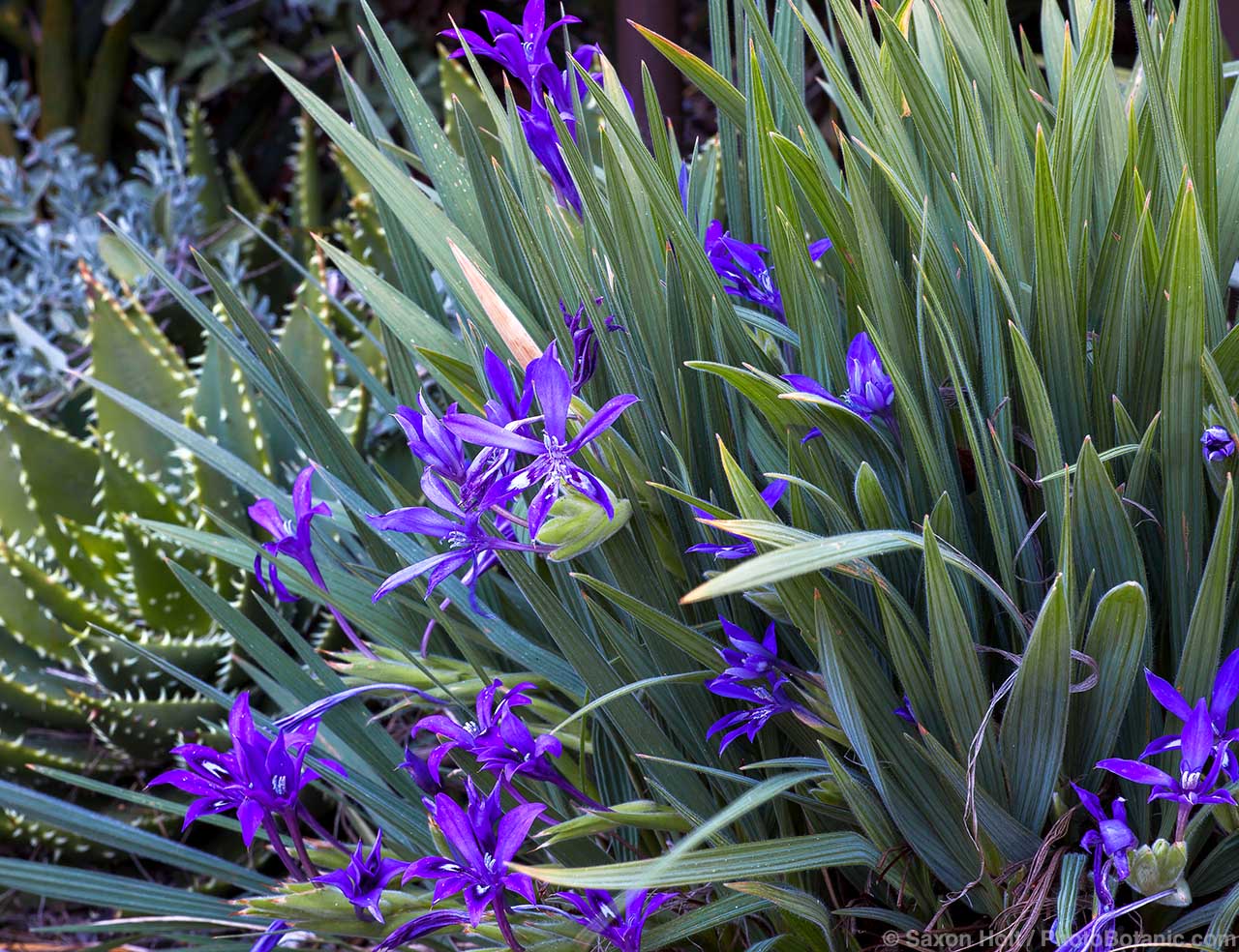Cedros Island Verbena
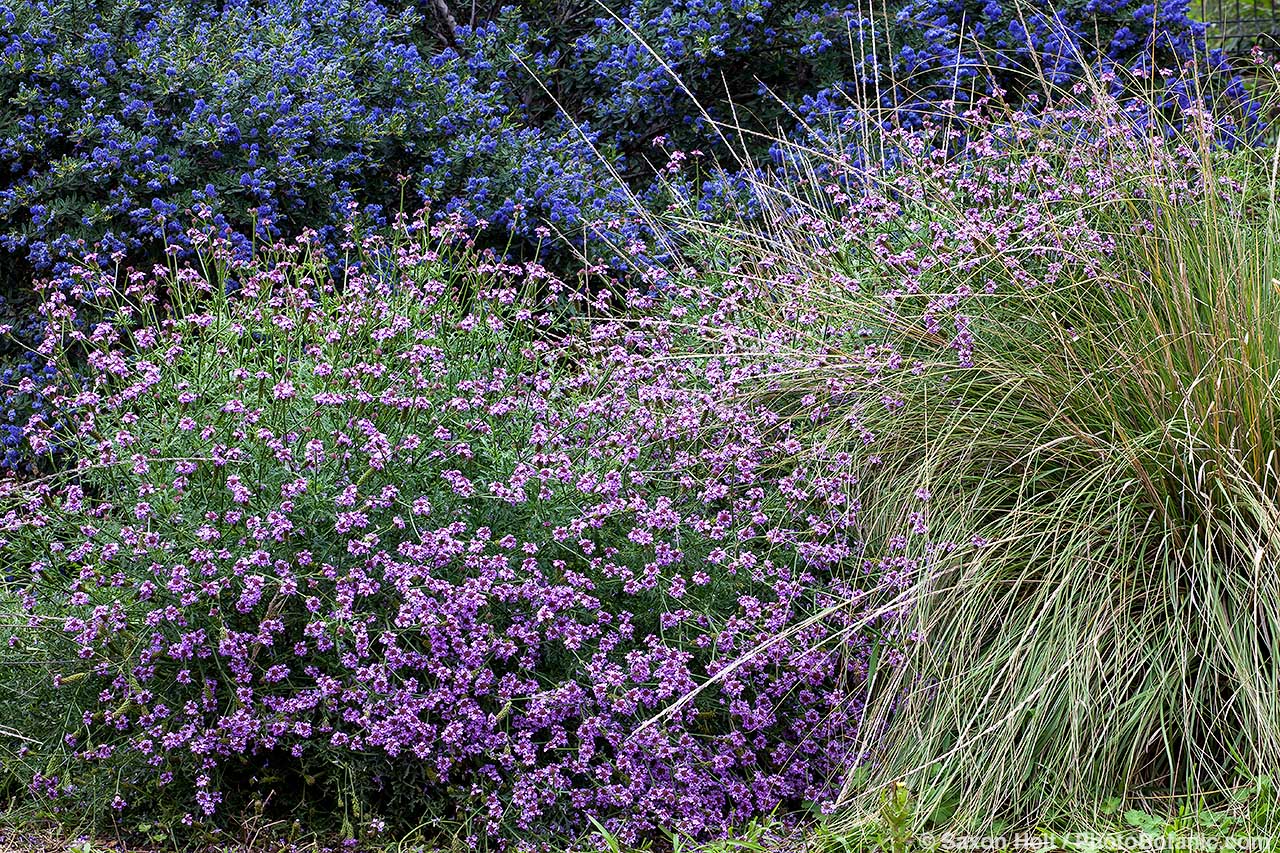
Share This!
Cedros Island verbena puts on quite a show. Tiny, five-petaled, star-shaped flowers with a faintly sweet-spicy fragrance are tightly packed into round-topped, inch-wide clusters. Clusters are continuously refreshed as older flowers discreetly disappear and new buds open at the tips of short spikes. The small, deeply divided, bright green leaves on wispy-looking but sturdy stems lend a delicate, almost lacy effect.
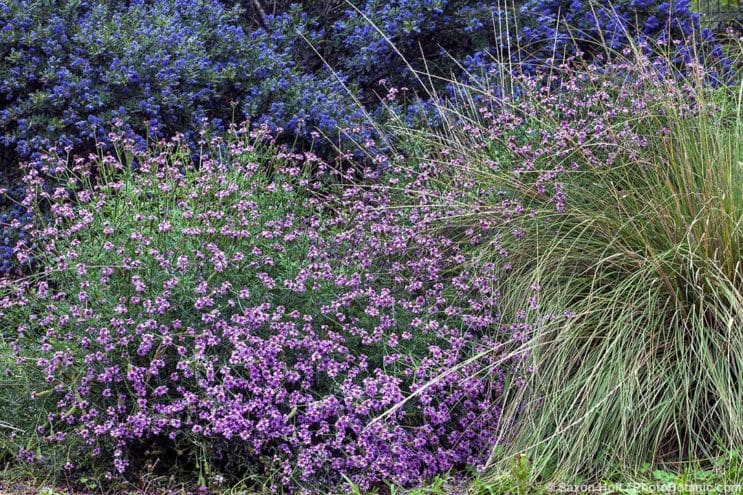
Glandularia lilacina ‘De La Mina’ flowering with muhlenbergia and ceanothus
Cedros Island verbena (Glandularia lilacina) was formerly known as Verbena lilacina and is still popularly known by and marketed under that name. The plant is native to the western (coastal) edge of the Vizcaino Desert in Baja California Sur and to northern parts of Cedros Island off the coast of southern Baja California. The climate is maritime desert, mostly arid, with winter rains and occasional late-summer storms amounting to only a few inches a year. Soils are sandy or rocky and well-drained.
There are at least two cultivars of Glandularia lilacina currently in the trade, with ‘De la Mina’ by far the most commonly offered. This selection makes a low mound of ferny foliage topped with masses of flowers in luminous shades of pinkish purple. Peak flowering is in late spring and early summer, but flowers can be present nearly year round and are wildly popular with pollinators. ‘Paseo Rancho’ is similar but with pale pink flowers on a somewhat larger plant.
‘De la Mina’ was collected on Cedros Island in Canyon de la Mina, which drains east toward the mainland near the island’s northern tip. Temperatures in the north are usually a few degrees cooler than farther south, with frequent breezes off the Pacific and summer fog at higher elevations. According to Carol Bornstein, who collected the plant, ‘De la Mina’ was growing at lower elevations in sunny, open, gravelly areas with other summer-dry vegetation.
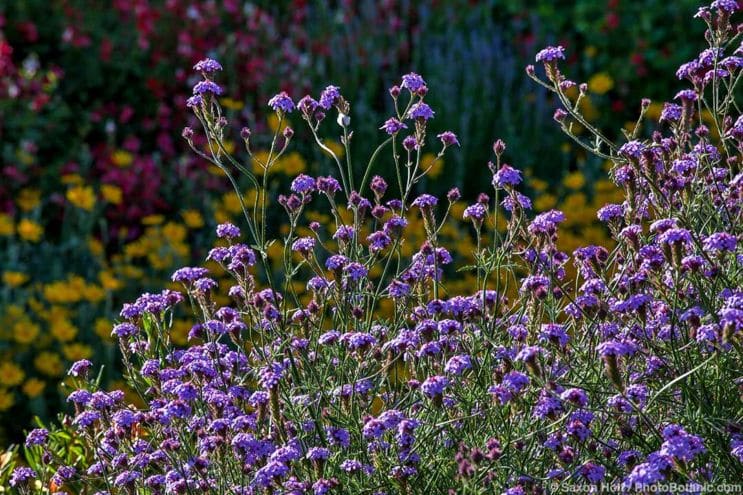
Considering the rather harsh conditions in which this plant naturally grows, it is surprising how easy it is in the garden. All that seems to be required, other than fairly mild winters, is a sunny spot with reasonable drainage and occasional summer water.
‘De la Mina’ does best with full sun near the coast and some afternoon shade in hotter, inland areas. Finding the right combination of drainage and irrigation seems to be the key. Heavier soils are fine if drainage is sufficient or watering is restrained.
Plants may go mostly summer-dormant if grown dry, dropping some brown leaves but retaining enough to appear distressed. Not to worry. New growth and fresh green leaves usually appear with cooler weather and winter rains.
Share This!
Related Articles
By: Nora Harlow
By: Nora Harlow
By: Nora Harlow



